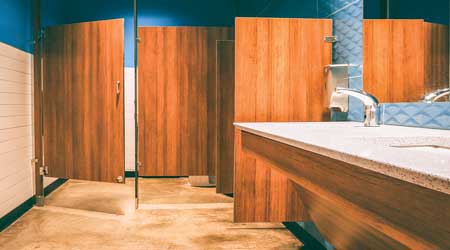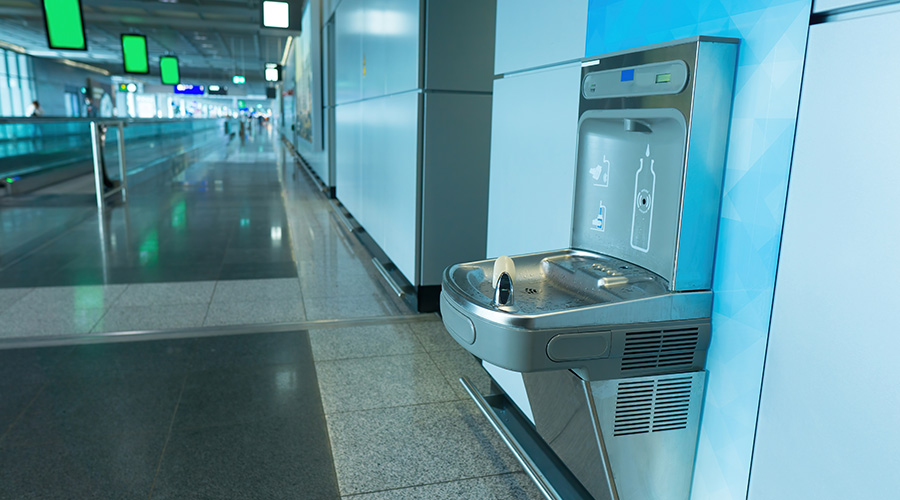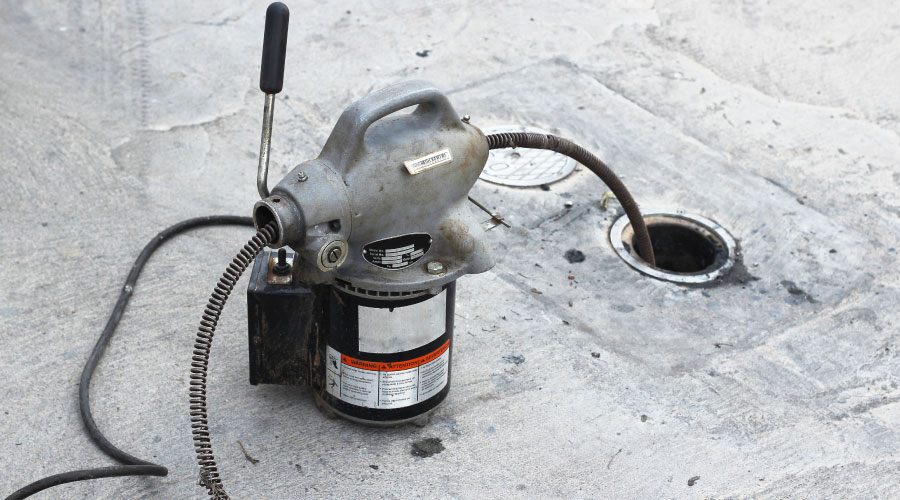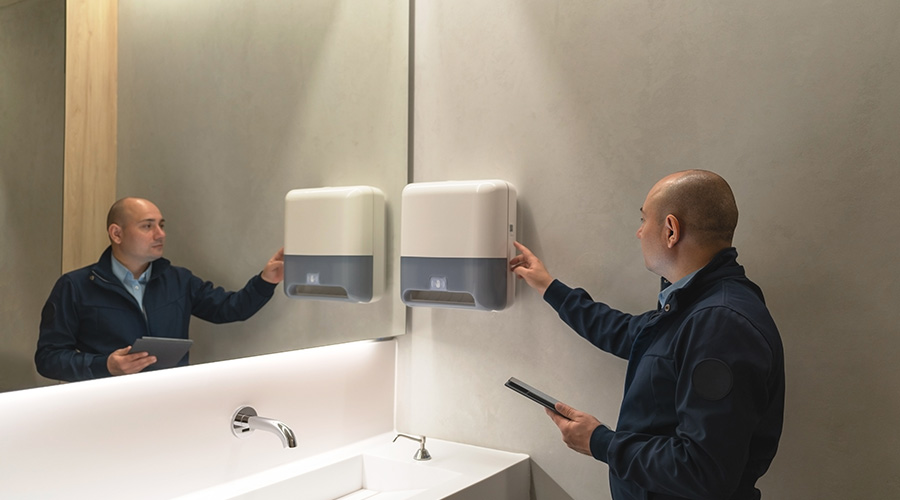 Touchless fixtures help encourage hand washing and reduce contact with potentially contaminated surfaces. Joe Dietrich
Touchless fixtures help encourage hand washing and reduce contact with potentially contaminated surfaces. Joe DietrichUnderstanding Restroom Design Shifts in Schools, Hospitality Facilities
Healthcare restroom design and infection control strategies hold lessons for schools and hotels in this new era of COVD-19.
Considering gender equality, gender identity and gender formation are now part of restroom architecture and design in schools. This may become more common when designing for other industries as well.
Flow and use sequence are critical, especially for younger age groups. It is important for them to have minimal contact with surfaces and other people. The design can help encourage behaviors, such as hand washing, hand drying, and other essential infection prevention.
Kids are prime suspects to be infected with colds, flu, and other infectious diseases that are transferred amongst their peers and then taken home to siblings and other family members. This has become a key consideration in the current COVID-19 pandemic as children are often carriers of the virus. This means that consideration should be given to adding items to school restrooms, such as touchless plumbing fixtures, soap dispensers, touchless hand dryers, and paper towels dispensers.
Durability and cleanability are serious factors in educational restroom use as the volume and intensity of use can be very high. This seems to be a universal issue in design, but schools present their own challenges. Labor and staff costs are some of the major operating costs for schools. Lowering the costs for custodial services is a key concern of administrators focused on keeping a majority of their funds invested in education.
Hospitality spaces
Specific to the public restrooms in hotels, designers try to extend the spatial narrative of the hotel lobby into the restrooms. This allows a designer to add unexpected elements that surprise the visitors, adding another layer to the overall design story. This approach does not vary based on it being new construction or adaptive reuse.
Properly designed guest-room bathrooms tend to be more about maximizing efficiencies and focusing on an elevated guest experience for all facets of the bath experience than anything else. This can include: intuitive shower controls, variable shower heads, high-end bath products, front-facing mirror lighting for optimal makeup application, deep sinks with pop-ups for shaving and hand washables, large counters, extra counter-height outlets and a small shower bench or ledge for shaving legs.
While not an entirely new trend, many new hotels are incorporating features such as shower controls that are opposite from the shower head. This will allow water temperature to be set and adjusted without the guest needing to be inside the shower compartment. Only their hand will get wet when setting the water temperature.
Providing hooks and hanging spaces in the guest restroom allows guests to reuse linens and towels for improved environmentally friendly operations, which is a growing trend in hotels nationwide. Thoughtful details, such as this, that address guests’ needs are often low-cost items that can greatly improve the guest experience.
Restroom designs are often critical to a successful project. Thoughtful designs that use the space efficiently and consider function, privacy, and access and infection transfer should always be top of mind when it comes to restroom design in any building or industry.
Ron Reim, AIA, NCARB, is the executive vice president and co-founder of Oculus Inc. As a licensed architect with more than 30 years of experience, he has worked on a broad range of project types for public and private clients.
Ali Summerford, NCIDQ, RID, LEED ID&C, EDAC, is the interior design director at Oculus Inc. She has more than 20 years of interior design experience with an emphasis in management, client relations, specifications, space planning and design presentations, among other areas.
Additional contributions from James Staicoff, James Standing and Joanne Fields of Oculus Inc.
Related Topics:














